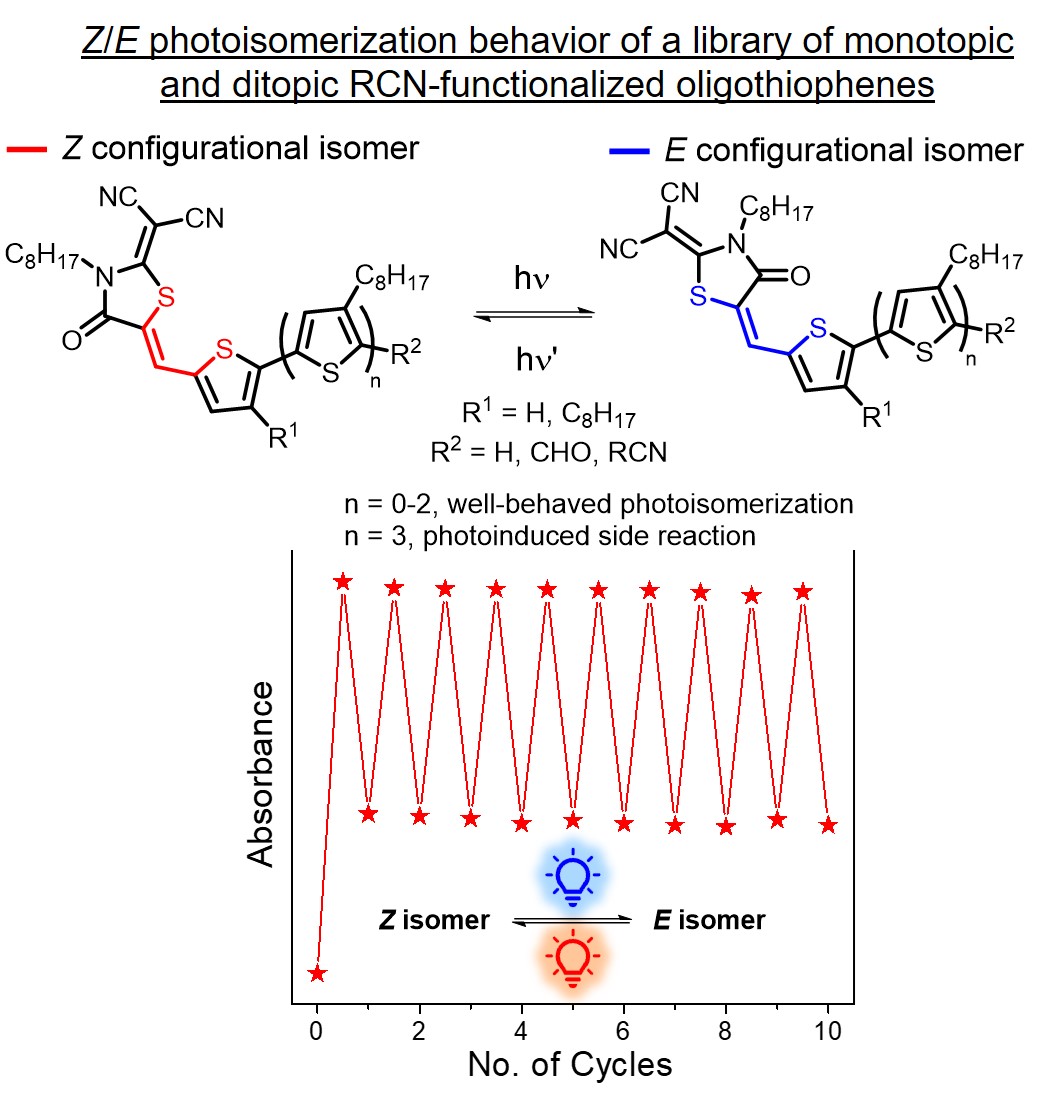
A series of oligothiophenes singly- and doubly-functionalized with dicyanorhodanine (RCN) units have been investigated to understand their Z/E photoisomerization behavior upon structural modulation. Monotopic RCN target molecules (1-Z–9-Z) were designed to observe the consequences of π-conjugation, solubilizing group substitution, and formylation of the thiophene units. In all cases, the Z isomer is obtained from synthesis as the thermodynamically stable isomer, while the E isomer is achieved through selective irradiation (including red light, λirr = 628 nm) as a Z/E mixture in solution. For the quarterthiophene entries photoisomerization is inhibited, with photoirradiation resulting only in degradation. The result comports with concentration-dependent studies, which show that increasing π-conjugation results in greater aggregation and muted Z/E photoisomerization. Ditopic RCN targets (10-ZZ–12-ZZ), mimicking acceptor-donor-acceptor (A-D-A) oligomers relevant to OPV materials, also show evidence of photoisomerization in solution, with formation of Z,Z/Z,E mixtures at the photostationary state (PSS). Complementary ground- and excited-state DFT calculations show excellent agreement with the experimental findings. This comprehensive structure-property analysis is expected to both guide and caution the functional materials community with respect to usage of photoisomerizable RCN-oligothiophenes for optoelectronic applications.
